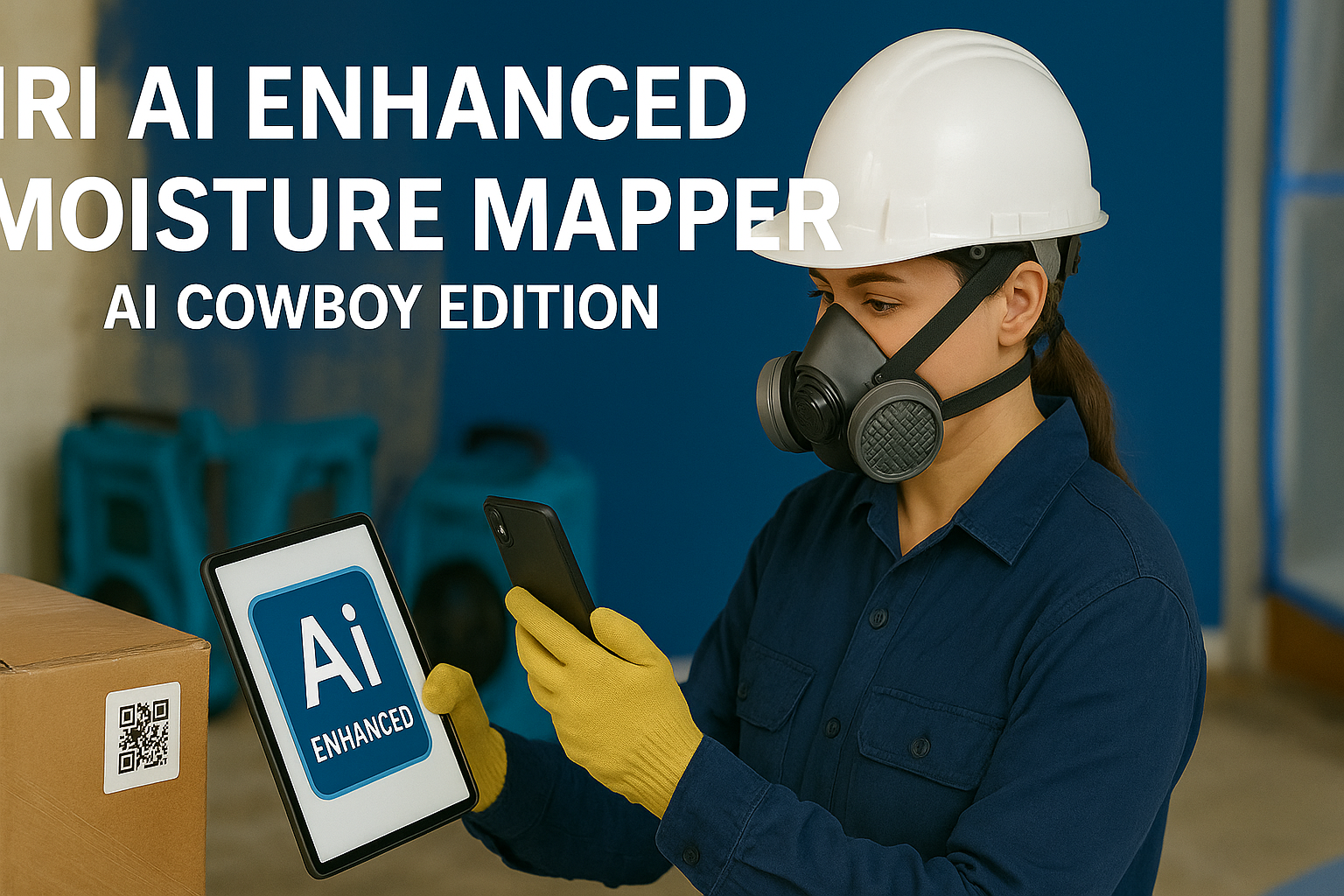AI Cowboy Edition •
Purpose
This page assists you to document residential and commercial packouts after fire, flood, or mold losses. Your mission: create a clear, defensible inventory with photos, values, container assignments, and chain‑of‑custody so customers and adjusters can trust every move.
Quick Start (3–5 minutes)
- Job Header: Enter customer & claim information at the top. This prints on all reports/labels.
- Add Rooms: Pick the space type (Residential/Commercial/Large Loss) → type a room/area name → Add Room. Use Add Template Rooms to prefill common spaces.
- Add Items: In each room, click Add Item and fill Item, Description, Qty, Unit Value. Line Total auto‑calculates.
- Containers: Type the Container # (box/crate/pallet). Use consistent numbering (e.g., 1–50).
- Status & Reason: Choose Salvage / Unsalvageable / Uncertain / Dispose and add a short reason.
- Photos: Upload or tap the camera button to capture an item photo.
- Labels & Manifests: Click Labels & QR to print container labels; Manifests prints item lists per container.
- Finish: Export PDF (with cover sheet) and/or Export CSV. Add Chain of Custody steps if items move.
Autosave: Entries
(not photos) save to your browser automatically. Reset clears
this local data.
Field Guide (what to enter)
- Item: Short name (e.g., “Sofa”, “TV 55in”, “Office Desk”).
- Description: Brand/model, material, condition, and visible damage (e.g., “Leather, seams intact, soot staining on back”).
- Qty: Number of identical items. If items differ in condition/value, list separately.
- Unit Value: Replacement estimate per item (USD). If unknown, enter 0 and note in Description for follow‑up.
- Container #: Physical box/crate/pallet number. Keep unique within the job.
- Status:
- Salvage: Reasonable to restore/clean.
- Unsalvageable: Destroyed, contaminated, or not cost‑effective to restore.
- Uncertain: Needs supervisor/adjuster review.
- Dispose: Approved discard (document reason).
- Reason: One line, objective (e.g., “Porous fabric w/ heavy soot odor”, “Swelled MDF from flooding”, “Visible mold growth”).
Buttons & Tools
- Add Room / Add Template Rooms – Build your room list quickly.
- Add Item – Adds a line in the room’s table.
- Camera – Opens the device camera (HTTPS/localhost required). Photo prints with the item.
- Labels & QR – Generates printable QR labels for each container found in your items.
- Scan QR – Uses the camera to read a label and auto‑filter items by container. If scanning isn’t supported, type the number into Filter: Container #.
- Manifests – Print‑ready lists grouped by container (room, item, qty, values, status).
- Chain of Custody – Log handoffs (From → To), initials, and notes. Prints cleanly.
- Export PDF – Creates a report with a cover sheet (job info + totals). Use your browser’s Save as PDF.
- Export CSV / Import CSV – Move data to/from spreadsheets. CSV includes Container, Status, Reason.
- Reset – Clears local autosave for a fresh start (cannot undo).
Workflow: Step‑by‑Step
- Pre‑check & PPE – Confirm site safety with your lead. Wear appropriate PPE and prevent cross‑contamination.
- Job Header – Fill out customer, address, claim/policy, adjuster, loss date, inspector/tech, and job ID.
- Rooms / Areas – Add rooms in the order you’ll pack. Templates speed this up; rename as needed.
- Itemization – For each item: complete fields, assign Container #, pick Status, add a clear Reason if not Salvage. Take a photo.
- Labels & Packing – Print container labels. Affix one to the box and one to the manifest or flap. Keep numbering sequential.
- Manifests & Handoffs – Print container manifests. Log movements in Chain of Custody (e.g., “Site → Warehouse”).
- QA Pass – Check Status Totals and Per‑Room Subtotals. Ensure non‑salvage items have a Reason.
- Export & Deliverables – Export PDF/CSV. File per company SOP and share with PM/adjuster as directed.
Quality Checklist (before you leave)
- Job header complete and accurate.
- All items have Qty, Unit Value (or a note for follow‑up).
- Status set correctly with a clear Reason for non‑salvage.
- Each item has an assigned Container #.
- At least one photo for unique or high‑value items.
- Labels printed/applied; Manifests printed.
- Chain of Custody updated for transfers.
- PDF/CSV exported and stored in the correct job folder.
Tips from the Field
- Keep Container #s simple (1, 2, 3…). Use letters only for pallets or rooms if your SOP requires.
- Prefer specific descriptions over vague terms (“Hardwood dresser, 5‑drawer, waterline 3 in.” beats “Dresser damaged”).
- Group identical items (Qty > 1) only when condition and value match.
- For mold losses, porous items with visible growth are often non‑salvage—document and set Dispose if your SOP/authority permits.
- When unsure, set Uncertain and note who will review (PM, adjuster, owner).
Troubleshooting
- Camera/QR won’t open: Use HTTPS (or localhost). Allow camera permissions in the browser.
- Buttons do nothing: Refresh the page. If still stuck, try a different browser (Chrome/Edge/Firefox).
- Photos missing after reload: By design, photos are not stored in autosave—re‑attach before printing.
- CSV import error: Ensure your header row matches the export format.
Data & Privacy
- Autosave stores non‑photo fields in this browser only. Clear with Reset.
- Do not enter sensitive info beyond what’s required for the job header and inventory.
- Follow company policies and applicable standards/regulations.

